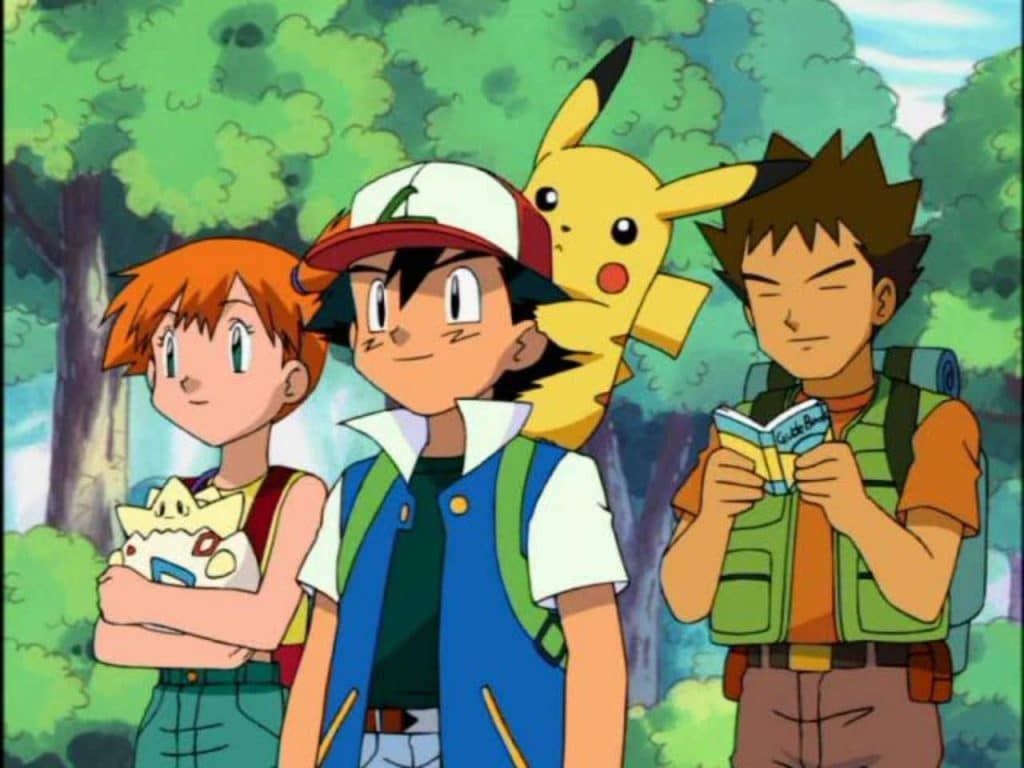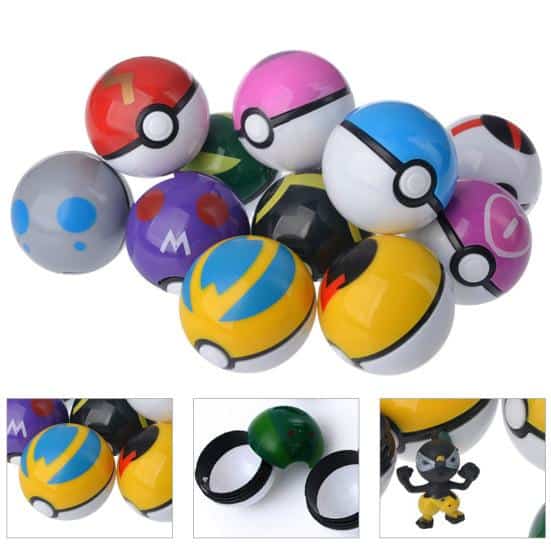If you ask anyone born in the ‘90s what toys were pivotal during their childhood, chances are that Beanie Babies, a Furby, a Tamagotchi, and Pokémon would all be listed. That’s because all those things came onto the ‘90s toy scene fast and fierce, causing parents to run to every toy store imaginable to grab their child the latest Beanie Baby collectible, or the Pokémon card their child couldn’t live without.
While most of those toys were simply fads that faded out, Pokémon did the exact opposite. Instead of fading out, Pokémon grew. The brand developed more products and expanded into more markets, and even today the franchise has still been able to remain relevant.
For a toy brand to remain popular more than 25 years after it was first introduced, the brand must be doing something right. For Pokémon, there are many reasons why people all over the globe are still drawn to the brand, but one of the most prominent reasons is because of its logo.
Keep reading below to find out more about how this iconic brand came to be and how its logo has been able to remain relevant all these years later.
Meet Pokémon
If you look back at 1996, you’d find a new video game that was more than a video game – Pokémon. Pokémon was developed by the well-known Japanese video game developer, Satoshi Tajiri. Satoshi came up with the idea of Pokémon after he thought back to one of his childhood hobbies. As a kid, he enjoyed catching tadpoles and insects around his childhood home in Tokyo. He used this as inspiration and partnered with Ken Sugimori, and other designers to develop Game Freak in hopes that this would give children the same joy he experienced catching those things. Beyond his childhood hobby, Satoshi was also inspired by a television show called Ultra Seven. On this show, Ultraman partnered with large monsters to help fight evil. Satoshi first named his original game “Capsule Monsters”, but Nintendo turned down this concept.
Nintendo finally agreed to finance the game’s development with Shigeru Miyamoto’s partnership even though they struggled to understand the game’s purpose. Shigeru was someone Nintendo worked with before and he was the creator of The Legend of Zelda and Mario. Nintendo gave Satoshi 6 years to develop the first game and what started as Capsule Monsters became Pokémon by the end of the game’s development. Pokémon was chosen as the name because Nintendo had some trademark and copyright concerns with the original name Satoshi came up with. After the video game finally took off, Pokémon expanded the franchise to also include trading cards, toys, books, comics, and anime. Today, the franchise’s collective sales have surpassed $1 billion.
Since Pokémon was founded in 1996, the brand has been able to create a fictional universe for its users. Each user can choose a character who is a “Pokémon trainer.” This character is based on their personality and this character is specific to them. The trainer will then enter the universe to try to catch all the Pokémon characters. As they catch different Pokémon, the character/trainer grows their army to fight other Pokémon characters.
The game was first developed and designed for Nintendo’s Game Boy consoles, but once the hype grew, the game expanded to more offerings and more platforms so it could be available to the most amount of people.
What is special about Pokémon is that its logo and characters have become pop culture icons. If you look at movies, newspapers, magazine covers, or amusement parks, you’ll often see the brand featured on these media channels. While the characters have become a part of the brand, one timeless media element that is always featured is the yellow and blue Pokémon logo. Pokémon is still considered one of the most popular video games ever created, with only Nintendo’s Super Mario Bros ever surpassing Pokémon.
Pokémon’s Evolution
1982: Game Freak is created
Satoshi Tajiri launched the gaming magazine, Game Freak, with his friends. After writing about video games, Satoshi realized that instead of writing about them, he wanted to design and develop them. Game Freak shifted its focus to becoming a gaming firm and some of the games they first introduced included Yoshi, Mario and Wario, and Pulseman.
1996-1998: Pokémon is developed (and first released)
In 1996, Pokémon was developed. Pokémon started as a video game franchise that was named “Pokémon Red” and “Pokémon Green” in Japan. Satoshi was inspired after thinking back to his childhood when he collected tadpoles and insects by a pond, close to his childhood home in Tokyo. The original game was created for handheld consoles and was created as a cartridge. If users wanted to trade Pokémon with a friend, they just needed to connect their Game Boys with a cable. The game became popular in the U.S. after it was released in 1998. For the U.S. version, the game was released as “Red” and “Blue.” After millions of games were sold in the U.S., Pokémon was introduced in the United Kingdom.
1996-1999: Pokémon cards are first introduced
After the Pokémon video games took off, Media Factory developed Pokémon Trading Cards. These were first produced in October 1996 and when they were first introduced, there were 102 cards in circulation. These cards featured illustrations of Pokémon characters created by Ken Sugimori, Keiji Kinebuchi, and Mitsuhiro Arita.
Just like the video games, these cards were first released overseas but they were brought over to the U.S. in 1999, and just like with the game, these cards grew in popularity fast. Fans began seeking out certain cards, trading cards, and participating in Pokémon card tournaments.
1997: Pokémon (the television series) is launched
With the growing Pokémon hype, the franchise expanded to include a television series launched in 1997, called Pokémon. This show brought the game to life and followed the life of a boy named after the founder, Satoshi. Satoshi’s mission on the show was to become a Pokémon Guru alongside his character friend, Pikachu. Satoshi’s name was later changed to Ash Ketchum. In total, the series has released more than 1,000 episodes.
1998: The first Pokémon movie is released
After the television series created a loyal television following, the brand decided to explore another media outlet – film. This first film’s title was Pokémon: Mewtwo Strikes Back and was first released in Japan. This movie focused on the character Ash who was invited to a secret island where he meets a new Pokémon, Mewtwo. This movie was later released across the globe in 1999 and since the first film, there have been 23 Pokémon films total.
2016: Pokémon expands into the mobile market

While it may seem like Pokémon didn’t evolve for 15+ years at first glance with this timeline, that was not the case. The franchise continued to focus on its games, cards, television series, and movies. In 2016 though, Pokémon tackled a new market – smartphones. For this, Pokémon introduced a mobile game titled Pokémon GO. This mobile game used new, augmented reality technology that allowed users to explore their local surroundings to catch Pokémon. When the game was first released, it shattered the previous download records and today, it has been downloaded more than 1 billion times.
2018: Pokémon goes through a rebranding
Instead of rebranding its logo, Pokémon rebranded and reinvented its original games in 2018. The franchise introduced new versions of their Pokémon Yellow, Red, and Blue games. This new game was in the shape of Pikachu and Let’s Go Eevee. With these new games, users could throw Pokéballs with their Nintendo Switch controllers. Pokémon took this one step further and allowed users to take their Pokéballs out for a walk if they had a special controller. Pokémon’s rebranding inspired other companies to do the same and rebrand.
Roadblocks Along the Way
The biggest roadblock that Pokémon had to navigate was staying relevant. At the start of this article, we listed some of the biggest fads of the ‘90s. All the other fads that were listed all phased out in popularity, but Pokémon worked hard to ensure they remained relevant and popular. With any popular toy, it’s important to constantly evolve and look at what your consumers want, which is exactly what Pokémon did to ensure they did not fall victim to the same phasing out that its fellow ‘90s toys fell victim to.
The Meaning of Pokémon’s Logo and Pokémon’s Logo History
At first glance, Pokémon’s logo looks like a simple, eye-catching yellow and blue design. While some brands have different variations of their logo for different global markets, Pokémon does not. No matter what country you visit, the Pokémon logo will be the same (with the only exception being the Japanese logo). Pokémon’s logo can never be replicated or used without the brand’s approval and that is all thanks to Nintendo who owns the copyright and trademark.
The logo was developed alongside the game and for logo inspiration, Satoshi looked at the target audience – children. Satoshi and his team studied this demographic and found that children pay attention to bright colors and original visual images.
While other logos have gone through changes through the years, when you look at Pokémon’s logo, you’ll find the exact opposite. Let’s look at this logo more closely.
1996: The first (and only) version of the Pokémon logo
This original logo features a simple emblem in yellow and blue and if you’re a loyal Pokémon fan, you likely already know and can easily recognize this logo because it has never been reinvented. This is unusual for the gaming industry. Other games like Call of Duty, Resident Evil, and even some other Nintendo games, have updated their logo icons to recognize a shift in the game’s focus But with Pokémon, the emblem hasn’t undergone any major updates even though they’ve been a part of the gaming world for over 25 years.
This decision to not update the logo is an intentional one. As Pokémon was being developed and continues to be developed, the core aspects of the game have never changed. Pokémon director, Junichi Masuda, considers Pokémon the same as a sport like soccer, where fans watch live action time and time again. Just like with soccer or other sports, the Pokémon logo conveys a sense of nostalgia and when you have a loyal fan base that has stayed with you for 25 years, you don’t want to change the logo they love.
Pokemon’s logo font
Pokémon’s name was developed from the originally conceived Pokémon name, “Pocket Monster.” Given the target audience was children, the font was chosen because it embodies an energetic and playful tone. This logo is written in large letters and features curves like a rainbow, which is all appealing to this target demographic. The font choice is bold and stands out in the toy industry.
Pokemon’s logo color
Pokémon’s logo features two colors: yellow and blue. Yellow was chosen to convey optimism and joy and the blue color was chosen to embody class and excellence. Together these colors make up the iconic logo.
Pokemon’s logo symbols
The universal logo doesn’t include a symbol, as it is only made up of an inscription – the Pokémon name. The logo doesn’t need a symbol though because the appearance of the letters is what has made the brand so recognizable. Sometimes the logo is accompanied by a different character but at the core, the logo only consists of the Pokémon name.
Pokemon Today
Over 25 years since Pokémon was first introduced to the world, the brand is still growing in popularity. 6 years ago, when Pokémon celebrated its 20th anniversary, the brand released Pokémon GO. This mobile game made a splash, so the brand took that as a sign that now was not a time to slow down. That same year, they also released Sun and Moon.
What drives Pokémon’s growth is the nostalgia it brings old fans, and the excitement it brings to new players. Since Pokémon’s first released game, seven other Pokémon titles have been released, with the latest version being titled the Sword and Shield, and over 30 billion trading cards have been released. And if you are playing Pokémon today, you’ll be tasked with catching about 898 Pokémon! Looking at the brand’s lifetime sales, Pokémon has sold over 279 million games, and The Pokémon Company earns $1.5 billion in revenue each year.
Lessons Learned from Pokemon
The biggest lesson we all can learn from Pokémon’s logo is that a logo always has the potential to be timeless. What Pokémon did was create a logo based on what would appeal to their target audience. As the brand created more products and offerings, the logo always brought players back to the game they first loved.
When it comes to your brand’s logo, do your due diligence with your target demographic. Look at what appeals to them and what elements of the logos of companies they love stand out. Once you do that research, you can start a contest with Hatchwise to bring your logo vision to life.





















